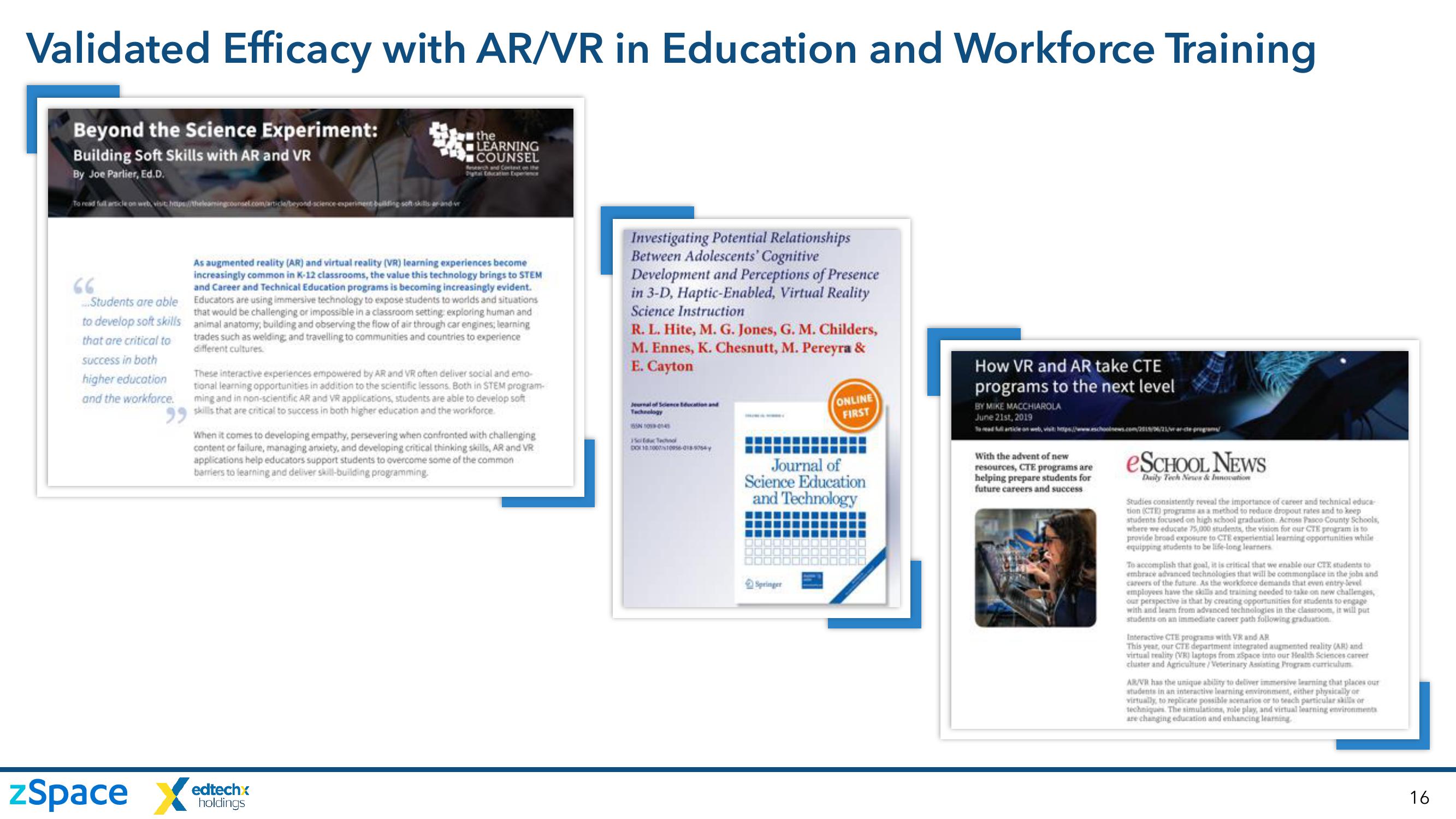zSpace SPAC
Validated Efficacy with AR/VR in Education and Workforce Training
Beyond the Science Experiment:
Building Soft Skills with AR and VR
By Joe Parlier, Ed.D.
To read full article on web, visit: https://theleamingcoursel.com/article/beyond science experiment building soft skills and v
66
Students are able
to develop soft skills
that are critical to
success in both
higher education
and the workforce.
the
LEARNING
COUNSEL
Research and Context on the
Digital Education Experience
As augmented reality (AR) and virtual reality (VR) learning experiences become
increasingly common in K-12 classrooms, the value this technology brings to STEM
and Career and Technical Education programs is becoming increasingly evident.
Educators are using immersive technology to expose students to worlds and situations
that would be challenging or impossible in a classroom setting: exploring human and
animal anatomy, building and observing the flow of air through car engines; learning
trades such as welding and travelling to communities and countries to experience
different cultures.
These interactive experiences empowered by AR and VR often deliver social and emo-
tional learning opportunities in addition to the scientific lessons. Both in STEM program-
ming and in non-scientific AR and VR applications, students are able to develop soft
skills that are critical to success in both higher education and the workforce.
99
When it comes to developing empathy, persevering when confronted with challenging
content or failure, managing anxiety, and developing critical thinking skills, AR and VR
applications help educators support students to overcome some of the common
barriers to learning and deliver skill-building programming.
zSpace edtechx
X
holdings
Investigating Potential Relationships
Between Adolescents' Cognitive
Development and Perceptions of Presence
in 3-D, Haptic-Enabled, Virtual Reality
Science Instruction
R. L. Hite, M. G. Jones, G. M. Childers,
M. Ennes, K. Chesnutt, M. Pereyra &
E. Cayton
Journal of Science Education and
Technology
1658 1090043
15 T
DOL10100010956-013-9764
ONLINE
FIRST
Journal of
Science Education
and Technology
Springer
How VR and AR take CTE
programs to the next level
BY MIKE MACCHIAROLA
June 21st, 2019
To read full article on web, visit https
With the advent of new
resources, CTE programs are
helping prepare students for
future careers and success
eSCHOOL NEWS
Daily Tech News & Innovation
Studies consistently reveal the importance of career and technical educa
tion (CTE) programs as a method to reduce dropout rates and to keep
students focused on high school graduation. Across Pasco County Schools,
where we educate 75,000 students, the vision for our CTE program is to
provide broad exposure to CTE experiential learning opportunities while
equipping students to be life-long learners
To accomplish that goal, it is critical that we enable our CTR students to
embrace advanced technologies that will be commonplace in the jobs and
careers of the future. As the workforce demands that even entry-level
employees have the skills and training needed to take on new challenges,
our perspective is that by creating opportunities for students to engage
with and learn from advanced technologies in the classroom, it will put
students on an immediate career path following graduation
Interactive CTE programs with VR and AR
This year, our CTE department integrated augmented reality (AR) and
virtual reality (VR) laptops from space into our Health Sciences career
cluster and Agriculture/Veterinary Assisting Program curriculum
AR/VR has the unique ability to deliver immersive learning that places our
students in an interactive learning environment, either physically or
virtually, to replicate possible scenarios or to teach particular skills or
techniques. The simulations, role play, and virtual learning environments
are changing education and enhancing learning.
16View entire presentation